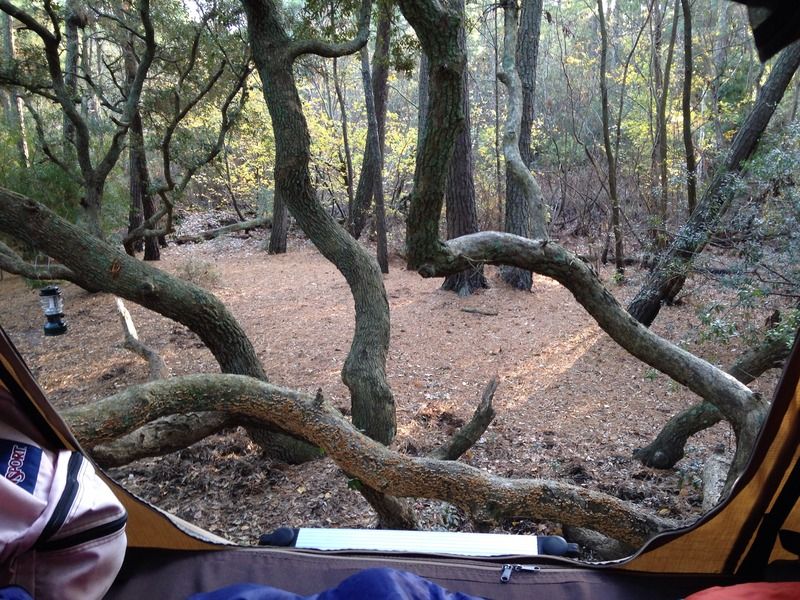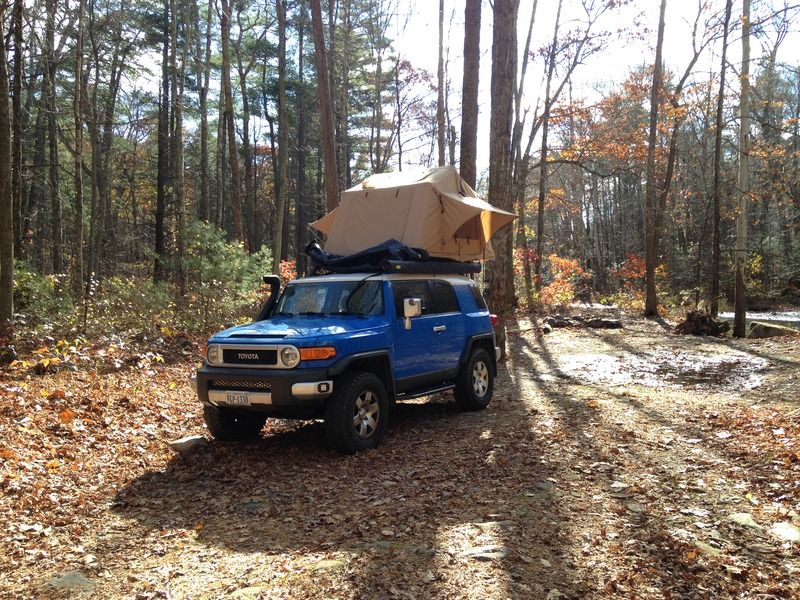CurtStyler
Observer
Hey all! I wanted to do a write up on my Smittybilt Overlander Tent. I didn't even know Smittybilt was in the RTT tent game until about 10 minutes before
I bought this. I picked up the deal from 4WheelParts last year when they had it for $599.00 After tax I paid $659.00 with free in store pickup.

 Dixie County FL
Dixie County FL
I had been planning on saving up for a Kukenam Sky from Tepui, but I jumped at the opportunity to get basically the same tent for a fraction of the price. (It's not EXACTLY the same but I will get to that.)
This is my first RTT and I'm tried to separate what I do and don't like about an RTT and the actual differences between this one and others from CVT and Tepui. I tried my best to reference the spec sheets to come up with the differences. With that said let's get into it.
If videos aren't your thing, I summarized my findings below:
The Overlander retails currently for $849.99. While CVT and Tepui both sell tents in this price range, they are smaller than the Overlander. The Smittybilt features a 95"x56" open size which more directly compares to the Tepui Kukenam Sky ($1350.00) and the CVT Mt. Bachelor ($1250.00). It's worth noting that the CVT also includes an annex for that price but does not feature skylight roof panels. The Tepui Kukenam Sky does feature the roof panels and otherwise appears extremely similar to the Smittybilt Overlander.
I'm going to run through a few of the places that I notices Smittybilt cut corners on the Overlander vs the others.
1) Zippers are not YKK and are not waterproof on the Overlander Tent. They do feel like they are durable, but just not waterproof. This doesn't matter too much because they are all covered and it would be unlikely to have a leak unless you had the rainfly off and it started pouring rain.
2) Ladder: The Ladder on the Overlander is one of the square style instead of the collapsable tube style that Tepui is now using. It's higher and takes up more space, but it is also easier to clean and customize the height if you have a short vehicle like I do. The ladder appears the same as the CVT Tent.
3) Lighting: The Overlander comes with a velcro LED strip for inside the tent. It runs off any USB power source and is very nice for lighting up the tent at night. It does come with a cigarette lighter adapter , an extension cable and a USB charger port for your car if that is how you want to power the light.
4) Fit and Finish: I will say there are things on the Overlander that just feel rushed. I had to vacuum the tent to clean up some metal shavings left from the manufacturer. I also had to drill out some of the holes on the frame where the metal pole go in to hold open the rainfly because they were off or not deep enough. All of this was pretty minor but it had to be done.
5) Inside the tent all of the seems look well taped, but you can see a few holes that are beneath the tape. These are really small and I doubt they will cause much of a fuss, but they are there. It just looks like the fabric is stretched a bit too much.
The last few bits all have to do with the tent in it's closed position.
6) The straps you use to close the tent once it is folded are made of velcro instead of using a clip mechanism. The straps themselves feel thin, but I haven't had any problem with them yet. I'm curious how they will hold up long term.
7)The black weather cover is attached with a large 2 inch thick piece of velcro around the perimeter of the tent. No matter how hard you try, there is also some part that is not fully closed. I doubt any water will get in, but it could be a way for bugs to enter the tent when it's packed away. This also means that you make a lot of noise when either setting up, or packing away the tent when you try to maneuver the velcro into place. It's not an issue all the time, but when you are trying to pack up quietly in a campground before sunrise it's a bit of a challenge to not wake everybody up.
That's about it as far as differences from what I can tell. I'm pretty happy with the tent, although it was a bit cold the other night when it dropped to 45 degrees. I can also see myself adding a bit more foam to the mattress, it's better than sleeping on the ground but another inch or so and it could be better.
I bought this. I picked up the deal from 4WheelParts last year when they had it for $599.00 After tax I paid $659.00 with free in store pickup.

 Dixie County FL
Dixie County FLI had been planning on saving up for a Kukenam Sky from Tepui, but I jumped at the opportunity to get basically the same tent for a fraction of the price. (It's not EXACTLY the same but I will get to that.)
This is my first RTT and I'm tried to separate what I do and don't like about an RTT and the actual differences between this one and others from CVT and Tepui. I tried my best to reference the spec sheets to come up with the differences. With that said let's get into it.
If videos aren't your thing, I summarized my findings below:
The Overlander retails currently for $849.99. While CVT and Tepui both sell tents in this price range, they are smaller than the Overlander. The Smittybilt features a 95"x56" open size which more directly compares to the Tepui Kukenam Sky ($1350.00) and the CVT Mt. Bachelor ($1250.00). It's worth noting that the CVT also includes an annex for that price but does not feature skylight roof panels. The Tepui Kukenam Sky does feature the roof panels and otherwise appears extremely similar to the Smittybilt Overlander.
I'm going to run through a few of the places that I notices Smittybilt cut corners on the Overlander vs the others.
1) Zippers are not YKK and are not waterproof on the Overlander Tent. They do feel like they are durable, but just not waterproof. This doesn't matter too much because they are all covered and it would be unlikely to have a leak unless you had the rainfly off and it started pouring rain.
2) Ladder: The Ladder on the Overlander is one of the square style instead of the collapsable tube style that Tepui is now using. It's higher and takes up more space, but it is also easier to clean and customize the height if you have a short vehicle like I do. The ladder appears the same as the CVT Tent.
3) Lighting: The Overlander comes with a velcro LED strip for inside the tent. It runs off any USB power source and is very nice for lighting up the tent at night. It does come with a cigarette lighter adapter , an extension cable and a USB charger port for your car if that is how you want to power the light.
4) Fit and Finish: I will say there are things on the Overlander that just feel rushed. I had to vacuum the tent to clean up some metal shavings left from the manufacturer. I also had to drill out some of the holes on the frame where the metal pole go in to hold open the rainfly because they were off or not deep enough. All of this was pretty minor but it had to be done.
5) Inside the tent all of the seems look well taped, but you can see a few holes that are beneath the tape. These are really small and I doubt they will cause much of a fuss, but they are there. It just looks like the fabric is stretched a bit too much.
The last few bits all have to do with the tent in it's closed position.
6) The straps you use to close the tent once it is folded are made of velcro instead of using a clip mechanism. The straps themselves feel thin, but I haven't had any problem with them yet. I'm curious how they will hold up long term.
7)The black weather cover is attached with a large 2 inch thick piece of velcro around the perimeter of the tent. No matter how hard you try, there is also some part that is not fully closed. I doubt any water will get in, but it could be a way for bugs to enter the tent when it's packed away. This also means that you make a lot of noise when either setting up, or packing away the tent when you try to maneuver the velcro into place. It's not an issue all the time, but when you are trying to pack up quietly in a campground before sunrise it's a bit of a challenge to not wake everybody up.
That's about it as far as differences from what I can tell. I'm pretty happy with the tent, although it was a bit cold the other night when it dropped to 45 degrees. I can also see myself adding a bit more foam to the mattress, it's better than sleeping on the ground but another inch or so and it could be better.







